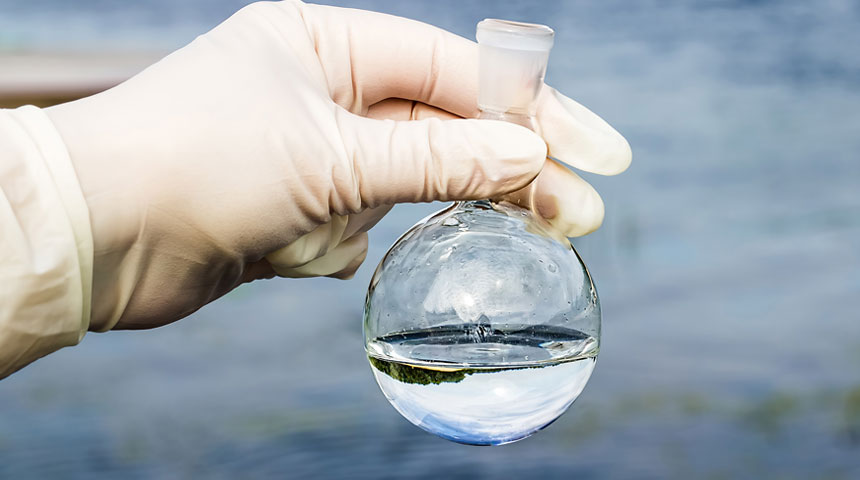Defining lab project scope and requirements

Defining Lab Project Scope and Requirements
In the dynamic world of scientific research and development, laboratories are the epicenters of innovation. These specialized environments require meticulous planning and execution to ensure optimal functionality and efficiency. A well-defined lab project scope and comprehensive requirements are crucial for achieving successful outcomes, maximizing resource utilization, and minimizing potential setbacks. This article delves into the intricacies of defining lab project scope and requirements, providing a comprehensive guide for lab technicians, project managers, procurement managers, and C-suites in the scientific industry.
The Importance of Defining Lab Project Scope and Requirements
The foundation of any successful lab project lies in a clear understanding of its scope and requirements. Defining these elements upfront is essential for several reasons:
- Clear Objectives and Goals: A well-defined scope outlines the specific objectives and goals of the project, providing a roadmap for the entire team to follow. This clarity ensures that everyone is working towards the same end result, minimizing confusion and misinterpretations.
- Effective Resource Allocation: By understanding the project's scope and requirements, organizations can allocate resources effectively. This includes budgeting, personnel, equipment, and consumables, ensuring that the project has the necessary support to succeed.
- Realistic Timelines: Defining the scope and requirements allows for accurate estimation of project timelines. This helps in setting realistic deadlines and managing expectations, preventing delays and ensuring timely completion.
- Risk Mitigation: A comprehensive understanding of the project's scope and requirements enables proactive risk identification and mitigation. By anticipating potential challenges, organizations can develop strategies to minimize their impact and ensure project success.
- Improved Communication and Collaboration: Clear and concise documentation of the project scope and requirements fosters effective communication and collaboration among all stakeholders. This ensures that everyone is on the same page, minimizing misunderstandings and promoting a cohesive team environment.
Defining the Lab Project Scope
The project scope defines the boundaries of the project, outlining what is included and excluded. It serves as a framework for the entire project, guiding decision-making and ensuring that all activities align with the overall objectives.
Key Elements of Lab Project Scope
- Project Objectives: Clearly define the specific goals that the project aims to achieve. These objectives should be measurable, achievable, relevant, and time-bound (SMART).
- Project Deliverables: Identify the tangible outputs that the project will produce. These deliverables should be clearly defined and measurable, ensuring that the project's success can be objectively assessed.
- Project Boundaries: Establish clear boundaries for the project, outlining what is included and excluded. This helps in avoiding scope creep and ensuring that the project remains focused on its core objectives.
- Project Constraints: Identify any limitations or constraints that may affect the project, such as budget, time, resources, or regulatory requirements. These constraints should be clearly documented and considered throughout the project lifecycle.
- Project Assumptions: List any assumptions that are being made about the project, such as the availability of resources, the performance of equipment, or the cooperation of stakeholders. These assumptions should be carefully evaluated and validated to minimize potential risks.
Defining Lab Project Requirements
Lab project requirements specify the detailed specifications and functionalities that the project must meet. These requirements are essential for ensuring that the project delivers the desired outcomes and meets the needs of the users.
Types of Lab Project Requirements
- Functional Requirements: These requirements define the specific functions that the project must perform. For example, a new laboratory equipment purchase might require specific analytical capabilities, data processing functions, or user interface features.
- Non-Functional Requirements: These requirements focus on the quality attributes of the project, such as performance, security, reliability, and usability. For example, a laboratory automation system might require high throughput, data integrity, and user-friendly interfaces.
- Technical Requirements: These requirements specify the technical specifications of the project, such as hardware, software, networking, and data storage. For example, a new laboratory instrument might require specific hardware configurations, software compatibility, and network connectivity.
- Environmental Requirements: These requirements define the environmental conditions that the project must operate in, such as temperature, humidity, and air quality. For example, a laboratory space might require specific temperature and humidity control for sensitive equipment or experiments.
- Safety Requirements: These requirements ensure the safety of personnel and the environment during project implementation and operation. For example, a new laboratory equipment installation might require specific safety protocols, personal protective equipment, and emergency procedures.
The Role of Lab Engineering Services in Defining Project Scope and Requirements
Lab engineering services play a crucial role in defining project scope and requirements, providing expert guidance and support throughout the process. These services encompass a wide range of disciplines, including:
- Lab Design and Planning: Lab engineering services can assist in designing and planning new laboratories or renovating existing ones, ensuring that the space meets the specific requirements of the project. This includes optimizing layout, ventilation, lighting, and utilities to create a functional and efficient workspace.
- Equipment Selection and Procurement: Lab engineering services can provide expert advice on selecting and procuring the right equipment for the project. This includes evaluating technical specifications, considering budget constraints, and ensuring compatibility with existing infrastructure.
- Installation and Commissioning: Lab engineering services can oversee the installation and commissioning of new equipment, ensuring that it is properly integrated into the laboratory environment and meets the required performance standards.
- Validation and Qualification: Lab engineering services can conduct validation and qualification testing to ensure that the equipment and processes meet the required standards and specifications. This includes performance qualification (PQ), operational qualification (OQ), and design qualification (DQ).
- Maintenance and Support: Lab engineering services can provide ongoing maintenance and support for laboratory equipment, ensuring its optimal performance and longevity. This includes preventive maintenance, troubleshooting, and repair services.
Benefits of Engaging Lab Engineering Services
Engaging lab engineering services offers numerous benefits for organizations undertaking lab projects:
- Expertise and Experience: Lab engineering services provide access to specialized expertise and experience in laboratory design, equipment selection, installation, and validation. This ensures that the project is executed with the highest level of professionalism and technical competence.
- Cost Optimization: Lab engineering services can help optimize project costs by providing expert advice on equipment selection, procurement, and installation. This ensures that organizations get the best value for their investment and avoid unnecessary expenses.
- Time Efficiency: Lab engineering services can streamline the project timeline by providing efficient planning, execution, and commissioning services. This helps in meeting deadlines and avoiding delays, ensuring that the project is completed on time and within budget.
- Risk Mitigation: Lab engineering services can identify and mitigate potential risks associated with lab projects, ensuring that the project is executed safely and effectively. This includes conducting risk assessments, developing mitigation strategies, and implementing safety protocols.
- Compliance and Regulatory Support: Lab engineering services can ensure compliance with relevant regulations and standards, such as those related to safety, environmental protection, and data integrity. This helps organizations avoid potential legal and regulatory issues and maintain a high level of operational excellence.
Conclusion
Defining lab project scope and requirements is a critical step in ensuring project success. By clearly outlining the objectives, deliverables, constraints, and requirements, organizations can create a solid foundation for efficient planning, resource allocation, and risk mitigation. Engaging lab engineering services can provide valuable expertise and support throughout the process, ensuring that the project meets the highest standards of quality, safety, and compliance. By embracing a comprehensive approach to defining lab project scope and requirements, organizations can unlock the full potential of their laboratory investments and drive innovation in the scientific industry.
Partner with IT tech for Success
As you navigate the complex landscape of lab project planning, remember that a well-defined scope and comprehensive requirements are the cornerstones of a successful endeavor. By meticulously outlining your project's objectives, identifying essential resources, and establishing clear expectations, you lay the foundation for a smooth and efficient execution. This meticulous approach not only minimizes the risk of costly overruns and delays but also ensures that your project delivers the desired outcomes, ultimately contributing to the advancement of scientific research and innovation.
In the realm of laboratory project planning, the importance of a well-defined scope and comprehensive requirements cannot be overstated. These elements serve as the guiding principles that shape the entire project lifecycle, from initial conception to final implementation. A clearly articulated scope delineates the project's boundaries, outlining the specific tasks, deliverables, and milestones that will be undertaken. This clarity ensures that all stakeholders are aligned on the project's objectives and that resources are allocated effectively.
Complementing the scope, comprehensive requirements provide a detailed blueprint for the project's execution. They encompass a wide range of factors, including technical specifications, performance criteria, safety protocols, and regulatory compliance. By meticulously documenting these requirements, you ensure that the project meets the highest standards of quality, reliability, and safety. This comprehensive approach minimizes the risk of unforeseen challenges and ensures that the project delivers the desired outcomes.
The benefits of a well-defined scope and comprehensive requirements extend beyond the project's immediate execution. They serve as a valuable reference point throughout the project lifecycle, facilitating communication, collaboration, and decision-making. By providing a clear framework for project management, these elements empower teams to work efficiently, effectively, and collaboratively, ultimately contributing to the project's success.
In the context of laboratory projects, where precision, accuracy, and safety are paramount, a well-defined scope and comprehensive requirements are essential for achieving optimal results. By meticulously outlining the project's objectives, identifying essential resources, and establishing clear expectations, you lay the foundation for a successful endeavor. This meticulous approach not only minimizes the risk of costly overruns and delays but also ensures that your project delivers the desired outcomes, ultimately contributing to the advancement of scientific research and innovation.
As you embark on your next laboratory project, remember that a well-defined scope and comprehensive requirements are the cornerstones of success. By embracing this approach, you empower your team to work efficiently, effectively, and collaboratively, ultimately contributing to the advancement of scientific research and innovation. Partner with IT tech, your trusted source for lab consumables and equipment, to ensure that your project is equipped with the necessary resources and expertise to achieve its full potential.
IT tech's commitment to excellence extends beyond providing high-quality products. We offer a comprehensive suite of Lab Engineering Services designed to support your laboratory projects from conception to completion. Our team of experienced engineers and technicians can assist you with every aspect of your project, from initial planning and design to installation, commissioning, and ongoing maintenance.
Our Lab Engineering Services encompass a wide range of capabilities, including:
- Project Management: We provide expert project management services to ensure that your project is delivered on time, within budget, and to the highest standards of quality.
- Design and Engineering: Our team of engineers can design and engineer custom laboratory solutions tailored to your specific needs and requirements.
- Installation and Commissioning: We provide professional installation and commissioning services to ensure that your equipment is properly installed and operational.
- Validation and Qualification: We offer validation and qualification services to ensure that your equipment meets regulatory requirements and performs as expected.
- Maintenance and Support: We provide comprehensive maintenance and support services to keep your equipment running smoothly and efficiently.
By partnering with IT tech, you gain access to a comprehensive suite of Lab Engineering Services that can help you overcome the challenges of laboratory project planning and execution. Our team of experts is dedicated to providing you with the support and guidance you need to achieve your project goals and advance your scientific research.
Explore our interactive tool designed to align your laboratory project needs with IT Tech's comprehensive range of services and products. Discover tailored recommendations to optimize your project's success by leveraging our expertise and cutting-edge solutions. Ready to elevate your laboratory experience? Submit an inquiry to IT Tech today and unlock a world of possibilities for your projects.
Partner with IT tech, your trusted source for lab consumables and equipment, and experience the difference that comprehensive Lab Engineering Services can make. Together, we can help you achieve your scientific goals and advance the frontiers of research and innovation.
Products You may Like
Check out other IT- Tech product that suit your taste
Subscribe to our newsletter
Stay updated with IT-Tech Insights
Related posts
Check out other IT- Tech Scientific Resources

Comparing HVAC system architectures
This article provides a comprehensive comparison of various HVAC system architectures commonly used in research laboratories. It delves into the strengths and weaknesses of each system, including central air conditioning, split systems, and variable refrigerant flow (VRF) systems. The article also discusses factors to consider when selecting an HVAC system, such as energy efficiency, temperature control precision, and cost. By understanding the different architectures and their characteristics, researchers can make informed decisions to optimize their lab's environment and enhance research productivity.

Specialty lab water treatment requirements
This article provides a comprehensive comparison of various lab wastewater treatment methods, including chemical, biological, and physical techniques. We delve into the advantages and disadvantages of each method, considering factors such as efficiency, cost, and environmental impact. The article also discusses the importance of complying with regulations and ensuring the safety of lab wastewater discharge. By understanding the different treatment options, researchers can make informed decisions about the most suitable method for their specific needs and contribute to responsible waste management practices.

Troubleshooting HVAC system failures
Maintaining a stable and controlled environment is crucial for any laboratory. HVAC systems play a vital role in ensuring optimal conditions for research and experimentation. This article provides a step-by-step guide to troubleshooting common HVAC system failures. We cover identifying potential issues, diagnosing problems, and exploring solutions to restore your lab's HVAC system to optimal performance. From temperature fluctuations to airflow problems, this guide equips you with the knowledge to address HVAC challenges and maintain a reliable lab environment.





























































































.png)



